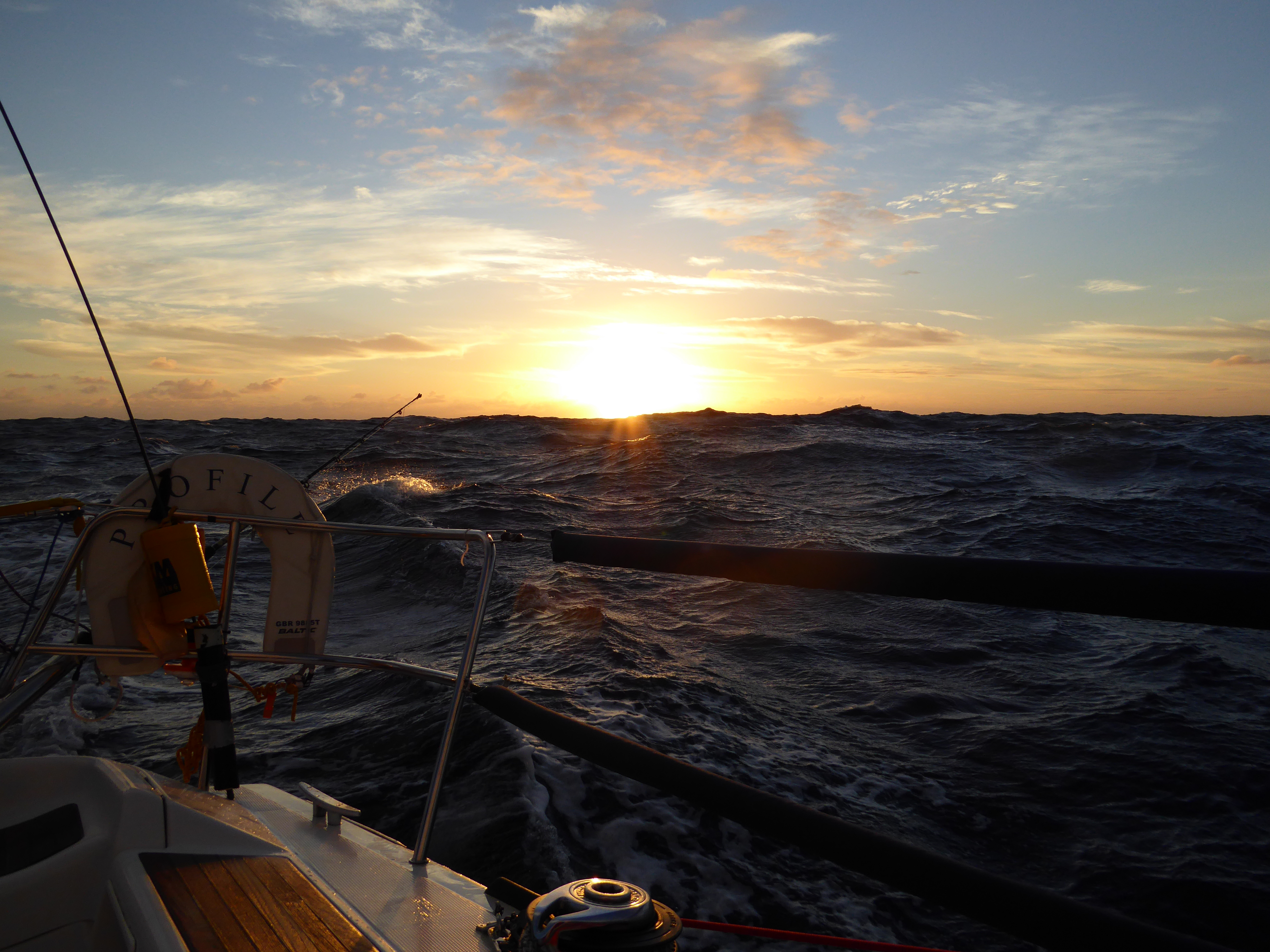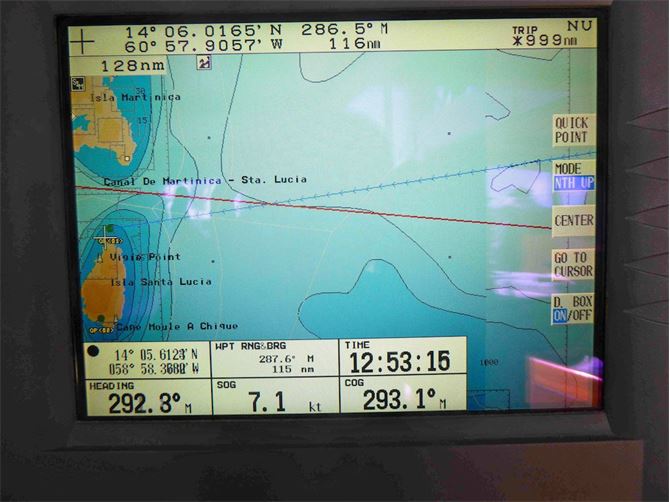“Bahati, Bahati, this is the ARC Finishing Line Sophie. Is that you we see sailing around Pigeon Island?”
“Sophie, this is Bahati. Yes, that is us! We see you at the finishing line and will be there shortly!”
The radio crackled at just after 2pm this afternoon with the imminent arrival of the ARC yacht Bahati. This sequence of transmissions has happened now 138 times in the 2014 ARC, nearly 200 if you count last week’s ARC+ arrivals. It’s not always the same voice on the radio – the finish line boats consist of a rotating group of volunteers, mostly past ARC participants – but the friendly transmission after almost 3,000 miles at sea must be a welcome sound indeed.
Bahati is indeed the 138th boat to arrive with the ARC fleet, and is expected in the marina any minute now. The pace of arriving boats has slowed considerably now, with only a handful making landfall each day, taking the pressure off of the berthing plan for the moment. But as the boats trickle in, the mass of people on the dock continues to grow, just adding to the excitement around the marina. It’s looking very good now that all boats will be in in time for next Saturday’s prizegiving ceremony. The ARC Programme really gets going this week, with Tuesday’s General Manager’s Party and Thursday’s Costume party, and the added participants will only add to that energy.
---
Bahati’s journey across the Atlantic will be over momentarily as they sail the last few hundred meters into Rodney Bay. It’s been a long-time coming. Bahati has been at sea now for over 20 days. For better or worse, it will soon all be over, the Atlantic a distant memory until another year or another crossing.
For most ocean sailors, a long-distance voyage can be broken down into three distinct phases. The first begins before the yacht ever heads to sea, with the anticipation of departure distorting one’s sense of time and bringing last minute projects into hectic focus. Once at sea, nerves and excitement – and maybe one too many celebratory departure drinks the night before – combine to give even the most experienced sailors at least a little bit of seasickness.
“It’s more like sea-annoyance to me,” said one participant. “I don’t get sick, per se, just tired and bothered by the motion of the boat not letting me stay on my feet!”
Some call it the boat dance, which often is performed while donning foul weather gear. Take one step left, one step front, then fall in someone’s lap!
Phase two begins after 3-5 days at sea, depending on the person. That’s the point at which the seasickness goes away, sleep patterns are established, allowing you to remain alert in the middle of a night watch and sleep while the sun’s up, and when you transition truly from life ashore into life at sea. Computers and television are forgotten, alcohol is left behind and there are fewer boat dances performed now that you’ve gotten your sea legs! What’s left is just you and the sea and the sky and the wildlife and the boat. It’s the philosophical part of the passage.

Profile enjoying a sunrise at sea during the middle phase of the voyage.
‘Sometimes it feels like it could go on forever,’ say many seasoned ocean sailors. ‘That’s what we go to sea for.’
Phase three, which Bahati is about to complete and which most of the yachts still at sea are just about entering, starts about 2-3 days before making landfall. You start to count down the miles and the hours until that first cheeseburger and cold beer, that first hot shower, that first wobbly step ashore when nothing is actually moving but your body is still compensating for the motion of the ocean.
This phase is usually the most nostalgic and sometimes even melancholy. Suddenly without realizing it you’ve unconsciously left that philosophical middle phase of the voyage and discover that the trip is almost over.
On a clear day, the sailors will see Saint Lucia from up to thirty miles offshore or so. Sailing at six knots, that’s a good five hours. The loom of the lights ashore will be visible for even longer at night. It’s then you realize, though might not quite admit so as not to jinx yourself, that you’ve made it.

Thula's crew were definitely into Phase 3, the arrival phase, with this photo!
Over those last hours the island will rise from the sea and details will begin to resolve. The VHF will come to life again with local traffic and perhaps an ARC boat or two already in the marina. You’ll near shore and see kitesurfers and swimmers, maybe a horseback rider or two on the windward side of the island.
And you’ll round Pigeon Island, and the sea will flatten in the lee of the land. And the finish line boat will see you and call you. And Tim from PhotoAction will come out in his RIB to take photos of you as you harden the sheets for the beat to the finish.
“Congratulations Bahati, you have just crossed the finishing line! Welcome to America and the Caribbean!”
And Sophie will announce your arrival, you’ll take the sails down all the way for the first time in three weeks, motor into the marina and step off the boat to that long-awaited and well-deserved rum punch.
And you’ll have crossed the Atlantic.